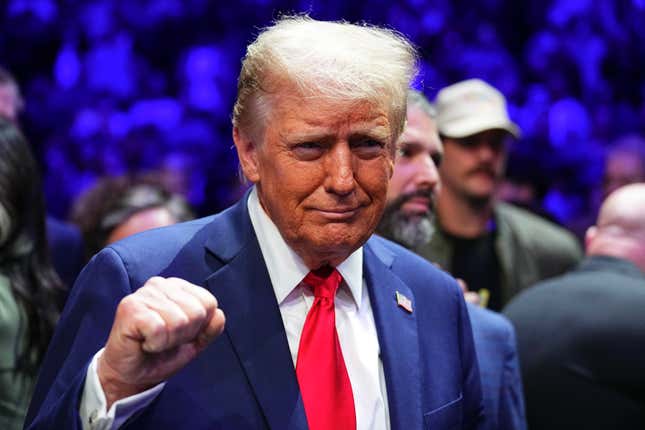
In This Story
President-elect Donald Trump has made sweeping tariffs a key policy for his upcoming administration, promising day one taxes on all imports from around the world. This could pose a threat to U.S. economic performance.
Investors believe a potential universal tariff is “the greatest potential risk for the US economy and US markets in 2025,” according to a Goldman Sachs (GS-1.29%) survey of over 500 market participants. In its outlook published last month, Goldman researchers cited a 10% universal tariff as one of the biggest risks to the economy.
Trump has said his universal tariff could reach up to 20%, as well as a 60% to 100% tariff targeting goods from China. Last week, Trump also vowed to slap Mexico and Canada — America’s two largest trade partners — with 25% tariffs on the first day of his new administration. The promised swath of tariffs could put upward pressure on a number of consumer goods.
On average, investors polled by Goldman who expect a universal tariff between 10% and 20% also expect higher inflation on average in 2025. More than half of investors who forecast a universal tariff also expect core Personal Consumption Expenditures (PCE) inflation of 2.6% or higher, compared to just 35% of investors who are expecting more limited tariffs.
Goldman believes that a sweeping tariff would temporarily raise inflation to around 3% at its peak, and could shave as much as 0.75-1.25 percentage points of off GDP growth, depending on whether it is offset by other tax cuts.
Core PCE, which excludes the prices of food and energy, rose 2.8% on an annual basis in October, the Bureau of Economic Analysis reported last week, a slight uptick from 2.7% in the prior month.
Any negative effects of tariffs will have “only a moderate and one-time effect,” Goldman said, which would come on top of already downwardly trending consumer prices.
Meanwhile, Goldman estimates that Trump’s proposal to impose tariffs on Mexican and Canadian imports would generate slightly less than $300 billion in revenue and boost the effective tariff rate by 8.6%, which would raise PCE by 0.9%.